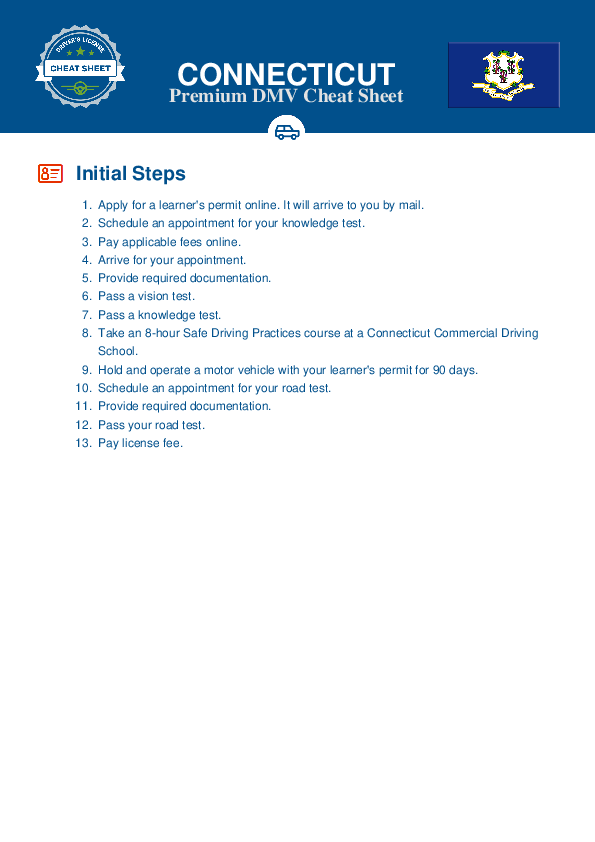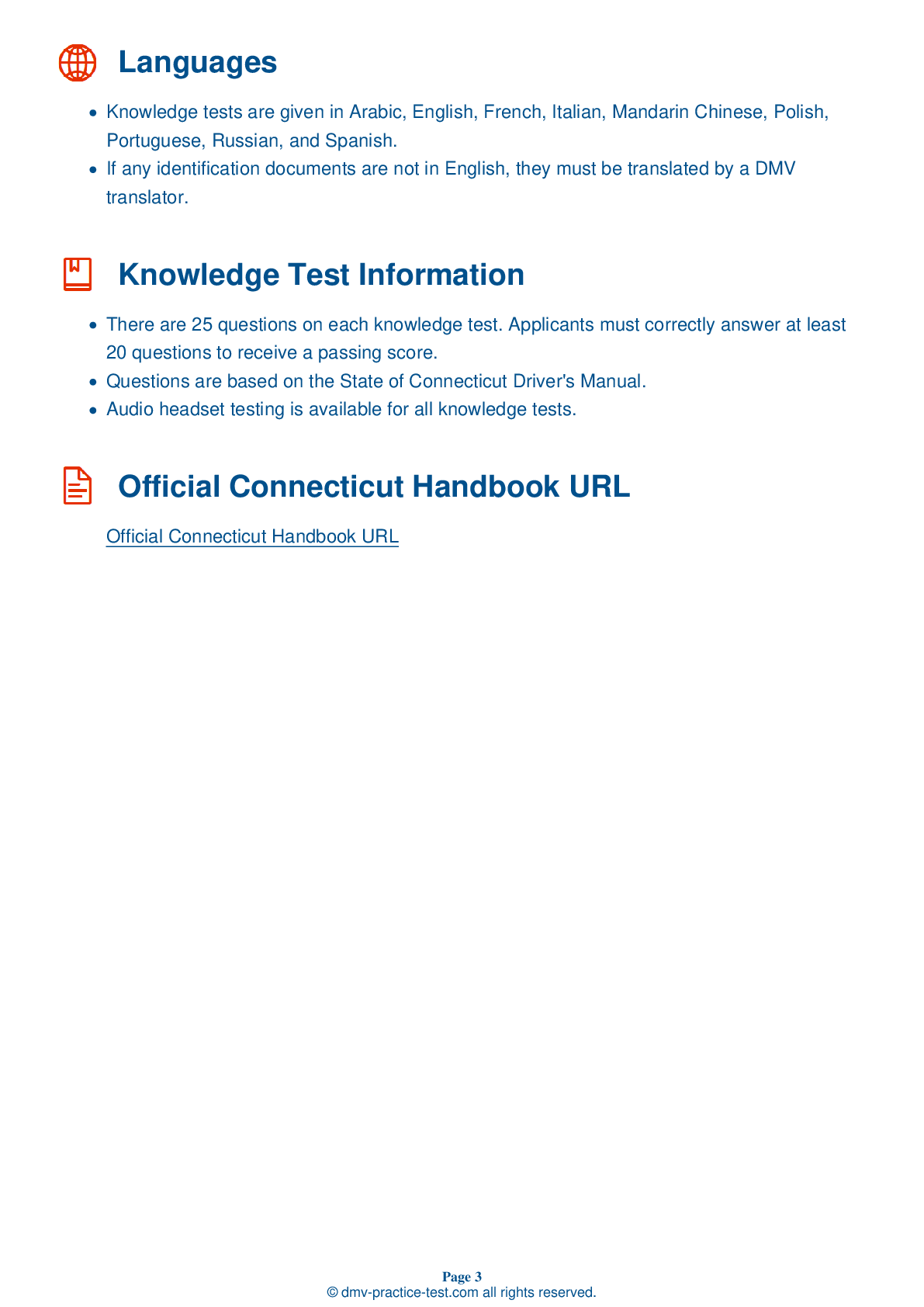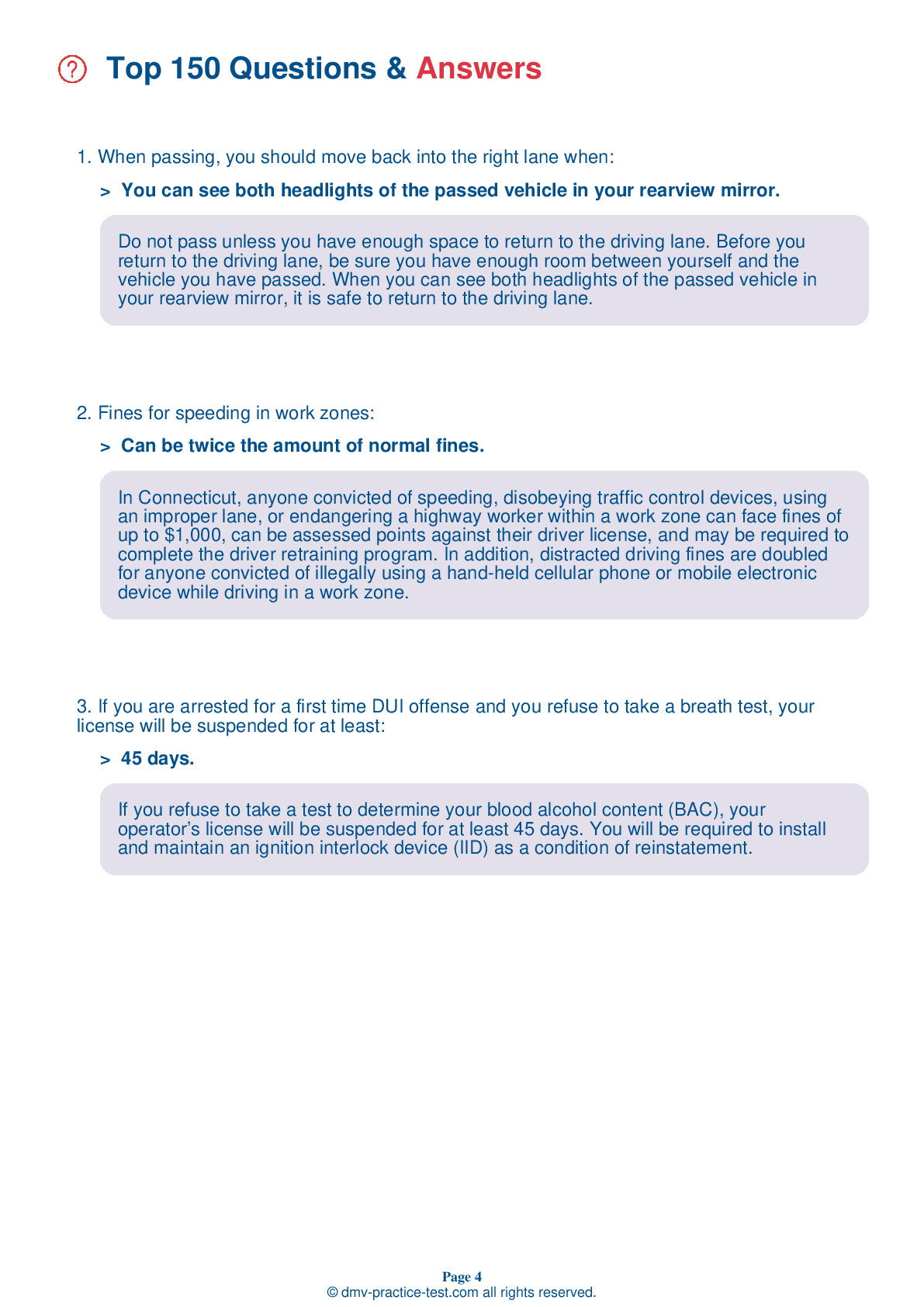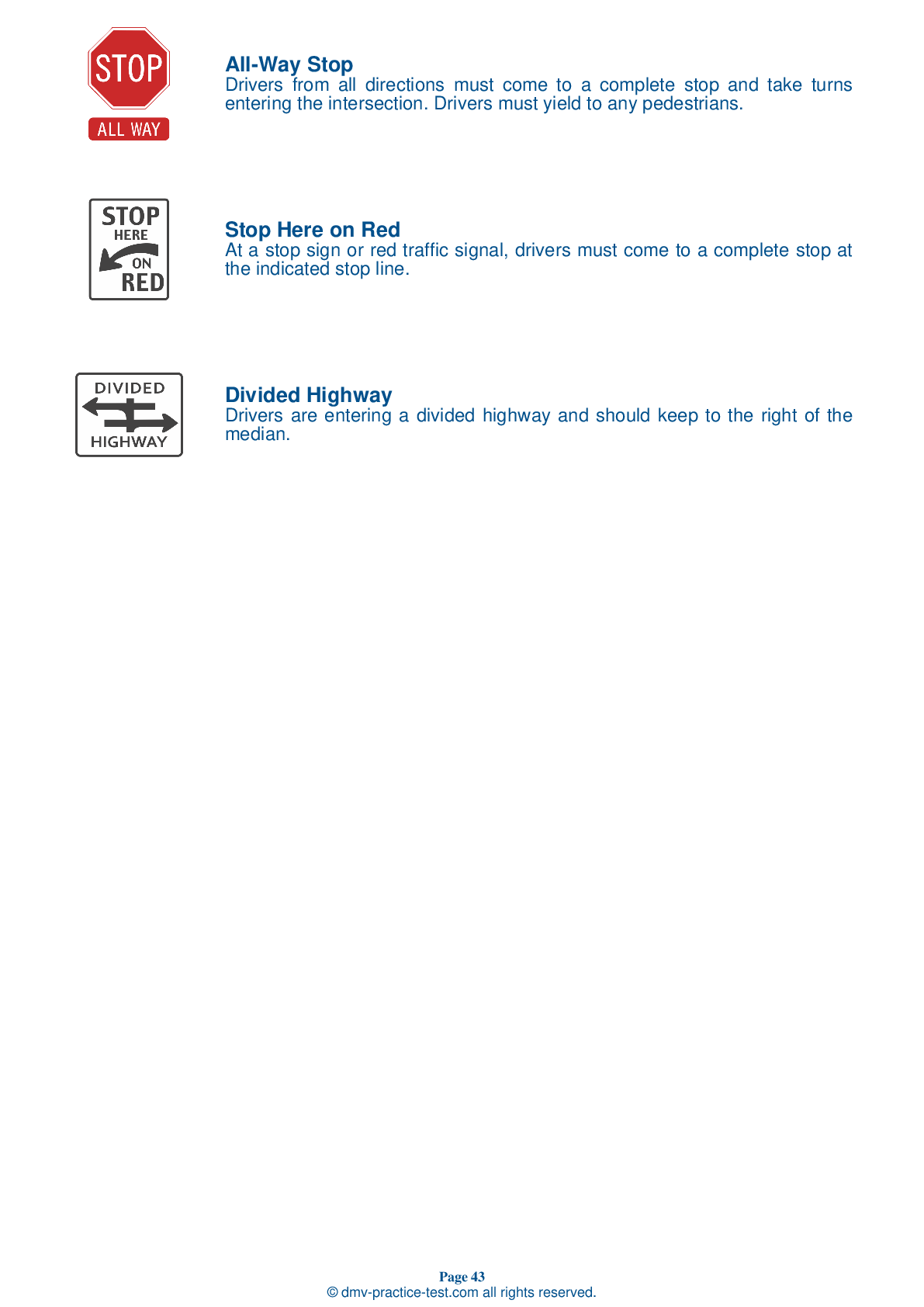FREE Connecticut DMV Practice Test #23
This set of Connecticut DMV practise tests was just updated for January 2025. It includes questions based on the Connecticut Driver Handbook's most essential traffic signs and regulations for 2025. Use actual questions that are very similar (often identical!) to the DMV driving permit test and driver's licence exam to study for the DMV driving permit test and driver's licence exam.
Each practise test question has a hint and explanation to assist you in remembering the concepts. The written component of the official DMV test will include questions about road rules, traffic signs, and driving statutes, as well as information from the Driver Handbook.
To achieve the required passing grade, you must correctly answer 20 of the 25 questions. Take our DMV practise exam to help you prepare for your Connecticut instruction permit or driver's licence.
The DMV exam is available in several languages.
Using any form of testing help will result in an automatic fail, and the DMV may take further action against your driver's licence, so avoid it.
1 . This sign means:
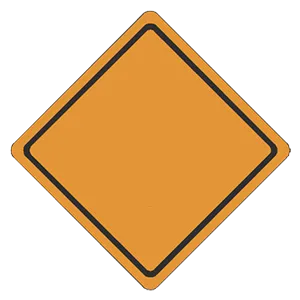
Diamond-shaped signs are used to warn of actual or possible hazards. The color orange is used for warning signs usually found in construction or maintenance areas.
2 . Which of the following factors affect an individual's absorption of alcohol?
Factors affecting a person's absorption of alcohol include the person's weight, their biological sex, the amount of food in their digestive tract, and the number of alcoholic beverages they have consumed. The only thing to do to remove alcohol from a person's system is to wait.
3 . This sign means:
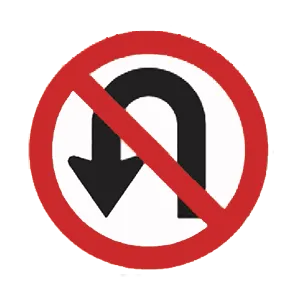
This sign indicates that U-turns are prohibited. You may see a sign like this at an intersection that commonly has oncoming traffic.
4 . This sign means:
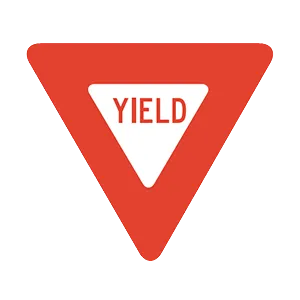
When approaching this sign, you must yield the right-of-way. Slow down and let vehicles and pedestrians crossing your path pass before you proceed. If necessary, stop before going ahead.
5 . It is unlawful to:
It is illegal to cross the centerline to pass when driving on hills, in curves, and in other locations where you cannot see ahead far enough to pass safely. You may not pass at street crossings, at railroad crossings, where signs indicate no passing zones, or where a solid yellow line is next to your lane. You may not pass when the vehicle in front of you has stopped for a pedestrian or when driving in work zones where passing would be hazardous.
6 . If there are no reduced speed limit signs clearly posted within a work zone:
Most work zones have signs alerting you to reductions in the speed limit through the work zone. The reduced speed limits are usually clearly posted within the work zone, but if there are no reduced speed limit signs, you should obey the normal posted speed limit.
7 . At intersections with a "Yield" sign, you must:
At a yield sign, you must slow down or stop, if necessary, and give the right-of-way to crossing or merging vehicles. Yield the right-of-way to any cross traffic that is close enough to cause conflict.
8 . To see objects in their blind spot when changing lanes, drivers should check:
Your vehicle's blind spots are the areas that you cannot see in your mirrors. Look over the appropriate shoulder to check your blind spot when changing lanes.
See the exact questions that will be on the 2025 Connecticut DMV exam.
99.2% of people who use the cheat sheet pass the FIRST TIME
LT gives us an insight on how the cheat sheet provided her with all the study questions she needed before taking her test.
Joe initially studied with the handbook and failed his test, he eventually found us online, studied and pass his test the first time around.
